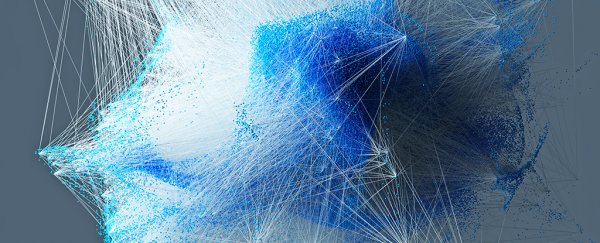Much of the work undertaken by artificial intelligence involves a training process known as machine learning, where AI gets better at a task such as recognising a cat or mapping a route the more it does it. Now that same technique is being use to create new AI systems, without any human intervention.
For years, engineers at Google have been working on a freakishly smart machine learning system known as the AutoML system (or automatic machine learning system), which is already capable of creating AI that outperforms anything we've made.
Now, researchers have tweaked it to incorporate concepts of Darwinian evolution and shown it can build AI programs that continue to improve upon themselves faster than they would if humans were doing the coding.
The new system is called AutoML-Zero, and although it may sound a little alarming, it could lead to the rapid development of smarter systems - for example, neural networked designed to more accurately mimic the human brain with multiple layers and weightings, something human coders have struggled with.
"It is possible today to automatically discover complete machine learning algorithms just using basic mathematical operations as building blocks," write the researchers in their pre-print paper. "We demonstrate this by introducing a novel framework that significantly reduces human bias through a generic search space."
The original AutoML system is intended to make it easier for apps to leverage machine learning, and already includes plenty of automated features itself, but AutoML-Zero takes the required amount of human input way down.
Using a simple three-step process - setup, predict and learn - it can be thought of as machine learning from scratch.
The system starts off with a selection of 100 algorithms made by randomly combining simple mathematical operations. A sophisticated trial-and-error process then identifies the best performers, which are retained - with some tweaks - for another round of trials. In other words, the neural network is mutating as it goes.
When new code is produced, it's tested on AI tasks - like spotting the difference between a picture of a truck and a picture of a dog - and the best-performing algorithms are then kept for future iteration. Like survival of the fittest.
And it's fast too: the researchers reckon up to 10,000 possible algorithms can be searched through per second per processor (the more computer processors available for the task, the quicker it can work).
Eventually, this should see artificial intelligence systems become more widely used, and easier to access for programmers with no AI expertise. It might even help us eradicate human bias from AI, because humans are barely involved.
Work to improve AutoML-Zero continues, with the hope that it'll eventually be able to spit out algorithms that mere human programmers would never have thought of. Right now it's only capable of producing simple AI systems, but the researchers think the complexity can be scaled up rather rapidly.
"While most people were taking baby steps, [the researchers] took a giant leap into the unknown," computer scientist Risto Miikkulainen from the University of Texas, Austin, who was not involved in the work, told Edd Gent at Science. "This is one of those papers that could launch a lot of future research."
The research paper has yet to be published in a peer-reviewed journal, but can be viewed online at arXiv.org.
